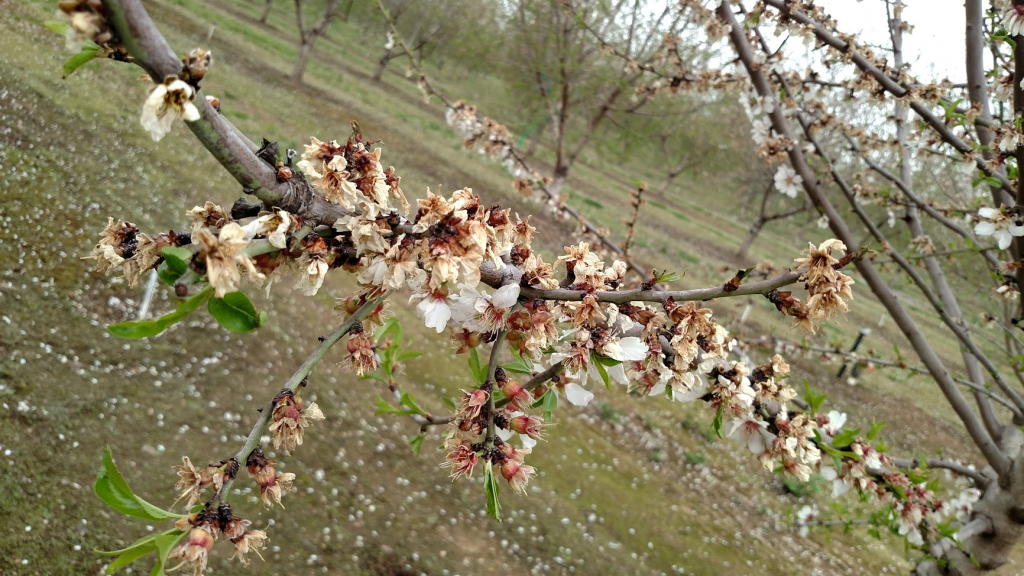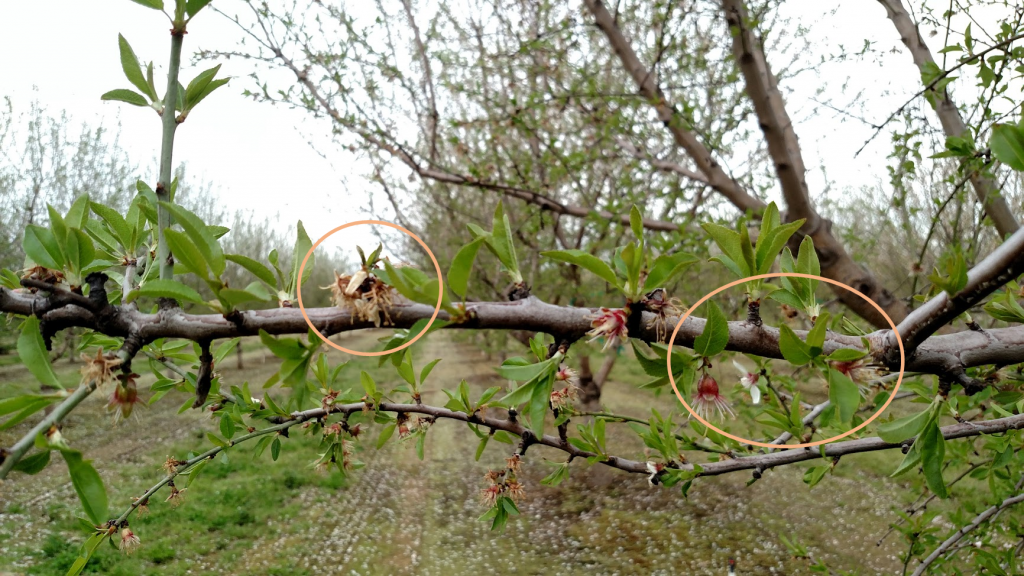Many almond growers in the Butte area were running sprinklers late last month for frost protection. A few nights reached 29 degrees (Feb 23, 25 & 28) and several others were in the low 30s. I haven’t had any growers bring freeze damage to my attention yet, but over the last couple days several orchards (including the almond variety trial at CSU Chico University Farm) began showing symptoms of bacterial blast.

Bacterial blast on an experimental self-fruitful variety at the CSU Chico almond variety trial. Photo: D. Lightle.
Bacterial blast symptoms are similar to those of brown rot. In the case of bacterial blast, the responsible bacteria, Pseudomonas syringae, infects susceptible flowers or tissues in cold, wet and frosty bloom conditions. In contrast brown rot is favored by warm rains and temperatures in the 70s (of which we have had far too few this year).
If you have suspicious looking flowers and are not sure if the culprit is blast or brown rot (say you missed a fungicide spray because of wet field access), you can collect flowers and place them in a homemade humidity chamber – a Ziploc bag with wet paper towel – to force sporulation. If you see spores after a couple days, the culprit is most likely brown rot. If there are no spores, then you are looking at bacterial blast.

Blast symptoms may vary throughout the canopy or even along a branch. It appeared to be less severe in the upper canopy than the lower canopy. On this Nonpareil branch, the left circle is on an affected cluster, whereas the right circle is fine. Photo: D. Lightle.
Bacterial blast may also kill entire spurs or twigs and cause leaf spots or defoliation. The same bacteria is responsible for bacterial canker. Like many diseases, varieties are deferentially susceptible. In the variety trial, Nonpareil fared alright whereas Wood Colony looked a lot more sad. Unfortunately, if you have an affected orchard, there isn’t much you can do except maintain best practices so the tree fills in any blank zones with new vegetative growth.
More information:
UC IPM – Bacterial Canker and Brown Rot
Sac Valley Orchards – Bacterial Blast
Almond Doctor – Bacterial Blast


Leave a Reply